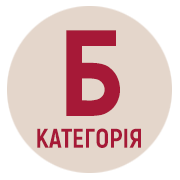THE PECULIARITIES OF THE FORMATION OF UKRAINIAN-LANGUAGE TRANSLATIONS OF ERNEST HEMINGWAY’S WORKS IN THE XXTH CENTURY
DOI:
https://doi.org/10.32782/2410-0927-2020-12-5Keywords:
individual author’s style, translation, translation methods, lexical transformation, contextual equivalentAbstract
The article deals with the study of the historical backgrounds for the emergence of Ukrainian-language translations of Ernest Hemingway’s works in the twentieth century, and the main factors that determined the Ukrainian-language practice. It is noted that the starting point of this difficult process was the publication in the late 70s - early 80s of the last century of a four-volume edition of Hemingway's works in Ukrainian translation. One of the urgent objects of the translation search is the works of fiction of modern and postmodern directions. The manner of the writer is characterized as concise, restrained, economical and strict. Considering this fact, the translator must select the language equivalents of the translation carefully, avoiding literalism, and considering the analysed work as a whole system that conveys the storyline. An important step in establishing the practice of translating the works of E. Hemingway was the recession from vocabulary literalism to contextual equivalent to the original. The article determines the main characteristics of Hemingway’s works’ Ukrainian modern interpretations, such as the usage of phraseological units while translating direct speech and dialogues, the usage of authentic Ukrainian words considering the character’s sex, age and social status. The usage of pragmatic adaptation is also frequent. The ways of expressing the individual manner of Ernest Hemingway with the methods of fiction of the Ukrainian language are analyzed considering national features. The parallels between the social and cultural life of Ukraine are conducted in the conditions of the twentieth century and the growth of the translating activity on the basis of that of Hemingway’s works. It is indicated that the social-political situation in Ukraine restrained the development of translating practice: anti- Ukrainian policy blocked the publishing of Ukrainian translations. The negative attitude towards the plots of Hemingway’s works was another negative factor. The main factors which set the vector of translating activity and formed its main tendencies are identified. In the context of social parameters, the ways of their influence and their role in the forming of Ukrainian translating practice are analysed. The main achievements of Ukrainian interpreters in the process of interpretation of Ernest Hemingway’s works are singled out.
References
Denysova, Tamara. 2002. Istoriya amerykanskoyi literatury XX stolittya. Kyiv: Kyievo-Mohylianska akademiya.
Docenko, Rostyslav. 1971. Heminguej, yakoho mayemo i ne mayemo. Z nagody vydannya romanu “Po komu dzvin”. Vitchyzna 6: 157–164.
Dyuryshyn, Dioniza. 1979. Teoriya sravnytelnogo izucheniya literatury. Moskwa: Progress.
Kovganyuk, Stepan. 1968. Praktyka perekladu (z dosvidu perekladacha). Kyiv: Dnipro.
Kramar, Volodymyr. 2016. “Zberezhennya indyvidualnoyi poetyky pysmennyka u perekladi (na materiali romanu “Ostrovy v okeani” E. Hemingueya)”. Aktualni problemy filolohii ta perekladoznavstva. Khmelnytskyi 11: 80–85.
Kuharenko, Valeria. 1972. “Yazyk Ernesta Hemyngueya”. PhD diss., Moskwa.
Lanovyk, Mariana. 2006. Teoriya vidnosnosti hudozhnoho perekladu: literaturoznavchi proekciyi. Ternopil.
Orudzheva, Irina. 2014. “Problema adekvatnoi peredachi metafory Ernesta Hemyngueya v russkikh perevodah”. Molodoi uchenyi 4: 1220–1224.
Romanenko, Natalia. 2018. “Vzayemodiya indyvidualnyh styliv avtora ta perekladacha u hudozhnyomu perekladi (na materiali tvoriv E. Hemingueya v ukrayinskii interpretaciyi V. Mytrofanova)”. Pivdennyi arhiv. Filologichni nauky 74: 206–208.
Romanenko, Natalia. 2016. “Evolyuciya zasvoyennya spadshhyny E. Hemingueya cherez ukrayinski pereklady yak socialno determinovanyiproces”. Naukovyi visnyk Mizhnarodnoho humanitarnoho universytetu. Ser: Filologiya 25(1): 129–132.
Tarnavskyi, Ostap. 1966. Tuga za mitom: Eseyi. New York.
Heminguej, Ernest. 1979-1981. Tvory : v 4 t. Kyiv : Dnipro. T. 3.
Heminguej, Ernest. 1979-1981. Tvory : v 4 t. Kyiv : Dnipro, T. 4.
Antoinette Fawcett, Karla L. Guadarrama García, Rebecca Hyde Parker. 2010. Translation: Practice in Dialogue. New York: CIPG
Hemingway, Ernest. 1966. Across the River and into the Trees. New York: Penguins book.
Hemingway, Ernest. 1970. Islands in the Stream. New York: Charles Scribner’s Sons.
Hemingway, Ernest. 1972. The Fifth Column and the First Forty-nine Stories. London: J. Cape.
Sandra, Bermam. 2005. Nation, Language, and the Ethics of Translation. Princeton: Princeton University Press.







